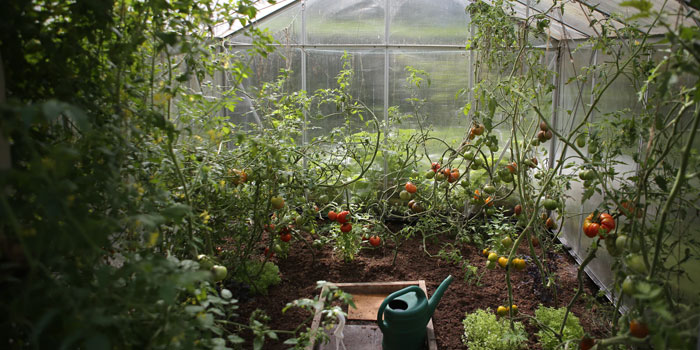
I used to think that gardening was way too much work to bother with. Then I discovered permaculture.
Permaculture—a portmanteau of ‘permanent agriculture’ and ‘permanent culture’—is defined by the Permaculture Research Institute as a “multidisciplinary toolbox that applies holistic solutions to integrate land, resources, people and the environment.”
Permaculture can include everything from a ‘food forest’ in your backyard, to a green rooftop, to adding elements like a compost pile or rain barrel to your yard, and more. It’s a way of living more in harmony with nature and making a better community. And, it’s a growing global movement now taking root in Canada, including Calgary, where I live.
My own foray into permaculture began several years ago with a food forest planted in my back yard to enhance the enormous crabapple tree and raspberry patch that were already there. My garden is now filled with white blossoms in the spring and an astonishing amount of fruit in the summer – Nanking cherries, tart cherries, gooseberries, saskatoons, red currants, strawberries, yellow and red raspberries.
Haskaps or honeyberries—an edible blue honeysuckle whose Japanese name means “berry of long life and good vision” kick off the season, with the first berries to ripen in the spring. I love that permaculture combines form and function. There are no tidy rows of vegetables in my garden – everything has to fend for itself, and there is plenty of color with hardy roses and perennial flowers blooming throughout the spring and summer. It’s not only beautiful, it’s also delicious. I have given buckets full of tart cherries to friends and they have shown me what they have done with the bounty, from cherry pies to white chocolate cherry scones. The plump tart cherries are also excellent eaten straight off the branch.
Permaculture is a way of managing homes, businesses and social organizations using nature as a guide that can be applied to everything from urban homes to farm-scale pieces of land. It combines the best of traditional and Indigenous knowledge and practices with cutting edge scientific innovations such as solar technology, says Lisa Patterson, president of the Permaculture Calgary Guild.
“Permaculture is a way of looking at the world and creating and designing a solution. Every problem can be looked at through a permaculture lens to craft an answer that prioritizes Earth care, people care and fair share—the permaculture ethics,” says Patterson, who lives on an off-grid farm near Okotoks in southern Alberta, where she makes fermented foods like sourdough bread, sauerkraut, kimchi and mead and supports organic, nutrient-dense food cultivation. “When you take those ethics, you can apply permaculture to anything. That’s what I really like about it. If you look at any problem through the lens of permaculture, it can help bring clarity. It allows you to come up with creative solutions that are better for the next generation and the planet.
“Permaculture is all about connections, and women do that very well. Permaculture doesn’t require you to have a lot of money, a lot of machinery or to be super strong. Women can do permaculture just as well, if not better than men, because, for one thing, women see things differently than men,” Patterson says.
Mike Dorion, owner of Living Soil Solutions, a Calgary-based company that focuses on traditional methods to feed soil and plants, adds, “it’s empowering to grow your own food.”
According to Dorion, permaculture offers a long-term solution to the space around you. In a garden, for example, “with natural soil amendments, it might be a little bit more money on the front end, but in the long run you’re saving money, because you’re now keeping those things (nutrients) in the system. You’re leaving things better than you found them.”
Permaculture celebrates the abundance of nature. In imitating Mother Nature through permaculture, we’re giving back more than we are taking. We can enjoy nature’s bounty, share it with others, and leave the Earth a little bit richer because we are doing it. When we enhance the web of life, we enhance our own lives, the lives of the people around us, and maybe the lives of the people who will come after us too.







